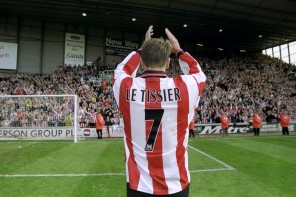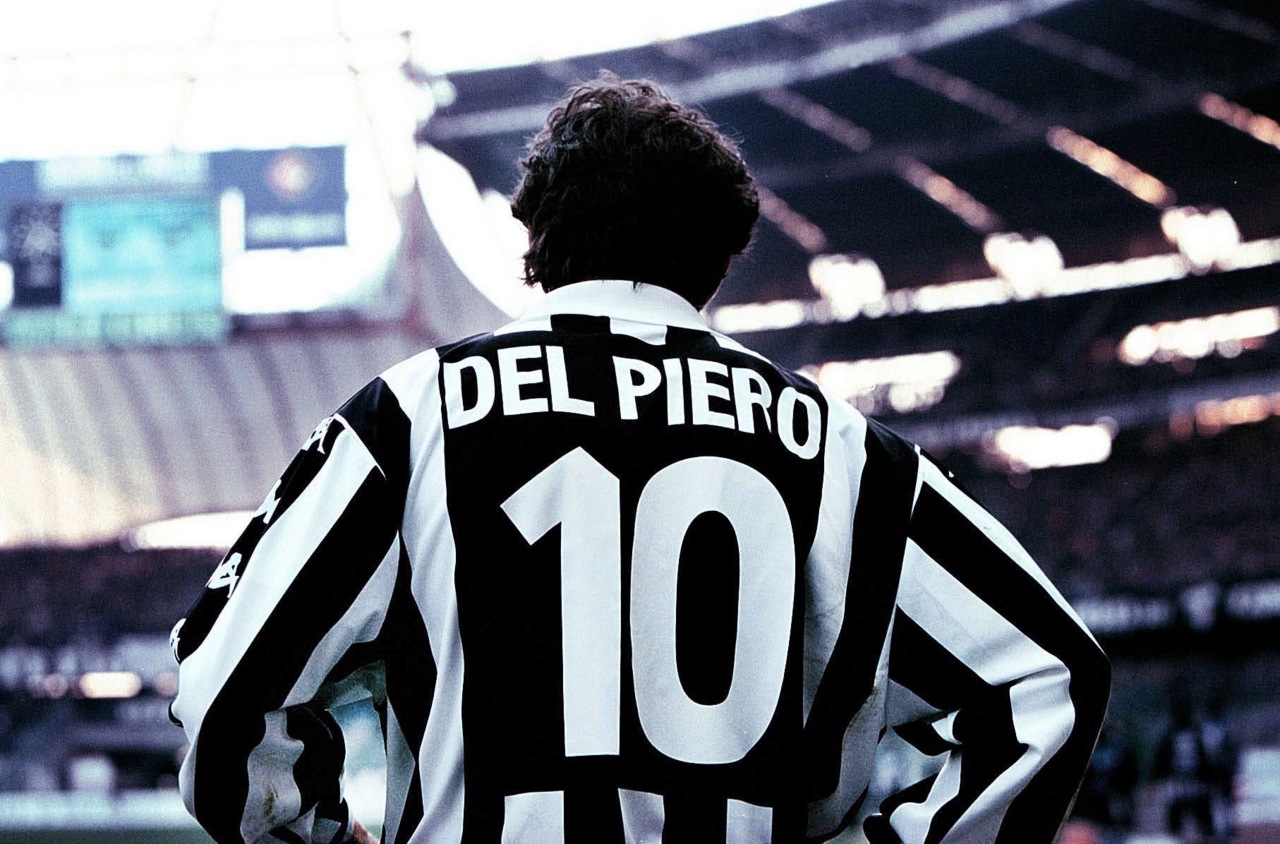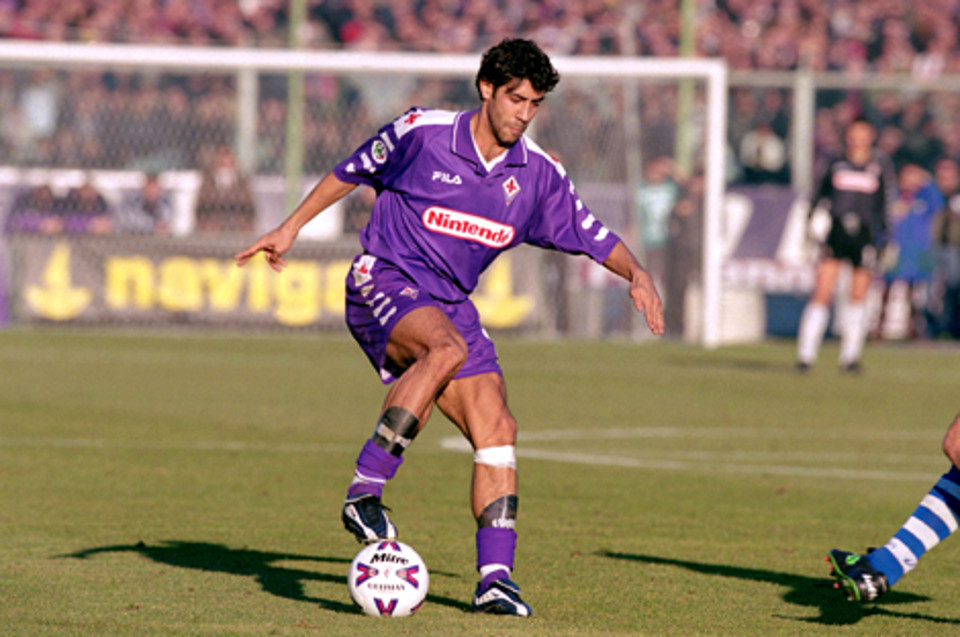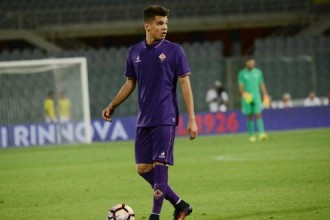The monk-like fantasista and heir to Michel Platini’s throne as France’s greatest ever player.
Zizou, is widely regarded as one of the greatest ever players in the history of the game. Possibly a touch overrated in some quarters when labelled with the ‘Greatest Ever’ tag, his achievements and trophy haul are certainly second to very few. For a time, he was also the most expensive player in the world, costing Real Madrid a huge £46 million, but you will find very few Madridisti claiming it wasn’t money well spent.
During his playing days Zidane became one of world football’s true superstars, and much loved players – his global fan base was (and still is) exceptional. From Europe, to North Africa (the origin of his roots) and the Middle East, to Japan, Zidane, was the man.
Yazid Zidane was born in 1972 to Algerian immigrants who had moved from Paris, but eventually settled in La Castellane, a suburb with a huge North African community in France’s southern town of Marseille. Yazid, his birth name, is what he was originally known by to his friends and family.
The young Yazid looked to replicate his idol – Olympic Marseille’s very own fantasista at the time – Enzo Franchescoli, by teaching himself tricks and repetitively juggling a football until he was better than most of the boys in the area. In a neighbourhood high in crime rate, Zidane had to become tough, though this was mostly focused through Judo – something else he showed an early talent for. It was football that won the youngsters heart however, and after school he would gather with the other boys from his tower block, in ‘Place Tartane’ – an 80 x 12 yard clearing in the middle of the housing complex – which served as a makeshift football pitch.
By 13 years old, his talent was such that he was spotted by a scout from Cannes who proclaimed:
I’ve found a boy who has hands where his feet should be.
After initial scepticism, he was allowed to join the club’s ‘centre de formation’, leaving home and his family in the process, to lodge with a club director’s family.
Aged 16, he was already making his league debut versus Nantes. Then, playing the same opponents two years on, he scored his first senior league goal in a 2-1 win. Remembering the promise he made the young Zidane upon scoring his debut goal, the president rewarded him with a brand new Renault Clio. Unfortunately for Zizou, the Va Va Voom factor wore off pretty quick as Cannes were relegated the very next season.
His skills hadn’t gone unnoticed however and with an offer coming in from Bordeaux, Zidane moved south for approximately £300,000, where he would be reunited with his junior international team-mate and close friend, Christophe Dugarry. They formed part of an exciting new team that made waves in Europe as well as at home, winning the Intertoto Cup in 1995 and finishing runners-up in the UEFA Cup.
It was during this period that he also made his national team debut in 1994, coming off the bench whilst France were 2-0 down against the Czech Republic, and scoring twice. The press went wild – the ‘new Platini’ had arrived. People outside of France were now beginning to take notice of Zidane’s attributes. Ray Harford, coach of Blackburn Rovers, Premiership champions at the time, expressed an interest in the midfielder, only for Blackburn’s owner Jack Walker to refuse, famously stating:
Why do you want to sign Zidane when we have Tim Sherwood?
Zizou was a relative late bloomer on the world stage. He was already aged 24 when gaining his first major move – Juventus paying a modest £3.2 million in 1996 to take him from the Bordeaux side that had starred (particularly against AC Milan) in the previous season’s UEFA Cup. Juve had chosen to snap him up before the summer’s Euro’96 competition in case of any value increase. But after his poor, lacklustre performances during the tournament, they probably thought their new commodity had depreciated in value – leading Juventus president Gianni Agnelli to cuttingly remark:
Is the real Zidane the one I’ve heard so much about, or the one I’ve been watching?
To be fair to Zidane, he had just completed a mammoth 65-match season. Then on the eve of the Euros, he’d suffered a car crash. His arrival in Turin signalled more ‘new Platini’ comparisons. But after a difficult period of adjustment to the new league, murmurs of disappointment could be heard throughout the Juve faithful, leading Zidane to announce:
I’m Zinedine Zidane and it’s important that the fans understand that I can never be Platini, on or off the pitch.
He was right. Zidane was a totally different character to the former Juventus number 10, and furthermore, that shirt at Juve now belonged to Del Piero. Zidane’s squad number at La Vecchia Signora was 21 – an alien number to a fantasista – however after the frosty start in Turin his performances started to resemble that of a true playmaker.
With winning goals against Championship rivals Inter, and by helping Juve secure their second Intercontinental Cup in November versus River Plate, Zidane silenced his doubters. That win was made even sweeter for Zidane as he’d faced his teenage idol, Enzo Francescoli; the Uruguayan fantasista was ending his career back at the club where he had shot to fame. For Zidane, life couldn’t get any better.
Only it could.
That major trophy was the first of his senior career and sparked a remarkable winning period which would see him collect nearly every major title the sport had to offer. His stay at the Turin giants saw him win the Scudetto twice, a UEFA Supercup and another Intertoto Cup. During the same period with France, he collected the 1998 World Cup, followed by the European Championship in 2000. The only major trophy which had evaded him thus far was the Champions League – he had finished runner-up twice with Juve and now it seemed like his Holy Grail. This, was probably a major factor in his decision to leave Juventus in the summer of 2001, when Real Madrid came calling, splashing out a whopping £47 million for his services.
The Real president Florentino Perez was embarking on his first ‘Galactico’ project, signing the best players in the world. And at this time, nobody was better than Zidane, having also picked up the greatest accolades any individual player could win – the Ballon d’Or in 1998, and World Player of the Year in that same year, whilst also collecting it in 2000. When he arrived at Juventus in 1996, he may have been labelled as an inferior model to the great Platini, but in 2001 he was leaving having certainly surpassed him.
In Spain, Zidane won the watching Bernabeau faithful over instantly. They adored his velvet touch and instant control. His mastery over the ball reminded their older followers of their glorious players from the past – not least their greatest ever, Alfredo Di Stefano, who’s number 5 shirt now adorned Zidane’s back (the number 10 shirt was taken by Real’s first Galactico, Luis Figo). The similarity would be greatly enhanced by the end of that season, when Zidane inspired Madrid to reach the European Cup final in Glasgow, scene of their infamous 7-3 victory in 1960 versus Eintracht Frankfurt from Germany.
During that match the great Di Stefano was at the peak of his powers, scoring a hat-trick. Real’s modern day version couldn’t quite emulate three goals, but scored what is considered the greatest goal in European Cup final history – a tremendous volley with his left foot (his wrong foot) from the edge of the penalty box, to lead Real to a 2-1 win over Bayer Laverkusen…from Germany. He had completed his Holy Grail.
Zidane won further trophies whilst in Spain, adding a La Liga championship, a UEFA Supercup and another Intercontinental Cup to his now bursting trophy cabinet. He also claimed a third World Player of the Year award in 2003, making him the joint highest ever recipient at the time (alongside Ronaldo).
Zizou was more than a collection of awards though. To watch him play during his peak was like watching the top ballet star perform – albeit in football boots – such was his elegance and technique when controlling and gliding with the ball. His signature move, the roulette, looked like a graceful pirouette performed in the middle of a clumsy mob, leaving his midfield markers dumfounded and kicking fresh air. His attributes led Michel Platini to observe:
Technically, I think he is the king of what’s fundamental in the game – control and passing. I don’t think anyone can match him when it comes to controlling or receiving the ball.
Brazilian coaching legend Carlos Alberto Parreira put it rather more bluntly, though non-the less complimentary, simply labelling him:
A monster!
Unlike many of his other legendary fantasisti, Zidane wasn’t a great goalscorer, never reaching double figures in Italy or Spain. However, he was most definitely a scorer of great goals. More importantly he was a scorer of decisive goals in big games, especially on the international stage. He scored twice (virtually identical headers) in the 1998 World Cup final, when France beat Brazil 3-1 to win their first ever (and only) World Cup. During Euro 2000 he scored a sublime free-kick in the quarter-final versus Spain, then, followed it up by scoring a Golden Goal in the semi-final win over Portugal. Euro 2004 saw a poor French performance but Zidane provided one of the highlights of the competition when scoring twice (a free-kick and a penalty) in injury time, turning a 1-0 defeat into a 2-1 victory over England, during the opening group game.
Cementing his place as a legendary World Cup performer in 2006 Zidane scored the winner – another penalty – versus Portugal in the semi-final. He then scored (another penalty) again in another World Cup final, giving France an early lead against Italy, in what was his final match as a professional footballer (he had announced his retirement from the game before the tournament). Sadly for him, France lost that game. Even sadder was the fact that Zidane wasn’t able to stay on the pitch until the final whistle, having received a red card. You see for Zizou, unfortunately, red cards also form part of his legend.
As a playmaker Zidane’s expression was all in his creative flair and artistry. However, during his career he was no stranger to some unsavoury incidents on the football pitch. Zidane was sent-off a massive 12 times during his career (including five times at Juventus and twice whilst at Real Madrid) – mostly for retaliation. These violent flashpoints were in direct contrast to his perceived cool persona as he glided around the field, though his brooding, often moody stare also served as a warning; he was a player who would not be bullied.
His response to provocation was first noted during his younger days at Cannes. Whilst he never started any trouble, he knew how to take care of himself. As Richard Williams deftly puts it in his excellent book ‘The Perfect 10’, he would respond ‘in a way that might be expected from a boy formed in a tough quarter of a hard-nosed city, where an injury might be repaid with a headbutt.’ Fast forward 18 years and Marco Materazzi was living testament that age had not mellowed Zidane’s own sense of personal justice – a flying headbutt to the Italian’s chest in response to alleged provocation during the 2006 World Cup final. Sadly, his last act as a professional footballer.
Many forget however, that this was not Zizou’s first red card during a World Cup tournament. Indeed during France’s triumphant World Cup victory in 1998 it is very easy to forget, in all the hysteria of his two headed goals in the final, that he was briefly a French villain. During the second group game versus Saudi Arabia, the balding fantasista inexplicably lost his cool and stamped on the back of the Saudi captain whilst he was lay on the ground after a challenge. It left the watching world mystified, as this time Zidane’s brand of personal justice seemed to come without any direct provocation. The French poster-boy was given a two match suspension, putting ‘Les Bleus’ campaign in jeopardy; the then captain Didier Deschamps summing up the nervous feeling of the nation:
I know he’s impulsive, but he’s put us all at risk.
Indeed without Zidane, the French struggled in their last-16 tie versus Paraguay – which is testament to the effect Zizou had on the national team. This would become a worryingly noticeable feature of all the French teams for the next decade, such was their talisman’s stature and ability. With him, they were world beaters, without him they looked also-rans. During qualification for the 2006 finals, the French (without Zidane who had announced his international retirement in 2004) almost failed to qualify. Zidane (along with Lilian Thuram and Claude Makelele) answered the call to help out his country and was immediately reinstated as captain. In doing so, he instantly rejuvenated the French, who went on to reach the (ill-fated) final of the tournament – knocking out previous, and future champions, Brazil and Spain, along the way; with Zidane in imperious form and winning the competition’s Most Valuable Player award.
So, with this fantasista, we had the beauty and the beast. The grace and the violence. Taking the rough with the smooth, he was one hell of a player – maybe Parreira had described him best after all…he was a monster!
Vital Stats
- Born: 23rd June 1972 in Marseille (France)
- Height: 1.85m / 6ft 1”
Club Career
- 1988-1992: Cannes – 61 apps / 6 goals
- 1992-1996: Bordeaux – 139 apps / 28 goals
- 1996-2001: Juventus – 151 apps / 24 goals
- 2001-2006: Real Madrid – 155 apps / 37 goals
- Totals: 506 app / 95 goals
International
- 1994-2006: France – 108 caps / 31 goals
Honours
- World Player of the Year: 1998, 2000, 2003
- Ballon d’Or: 1998
- FIFA World Cup: 1998
- UEFA European Championship: 2000
- UEFA Champions League: 2002
- UEFA Supercup: 1996, 2002
- Intercontinental Cup: 1996, 2002
- Serie A Championship: 1997, 1998
- La Liga Championship: 2003











First time Madrid were offered Zidane for 10million they instead bought Anelka for 20. Presumably he wasn’t expensive enough at that price. This was 97 I think.